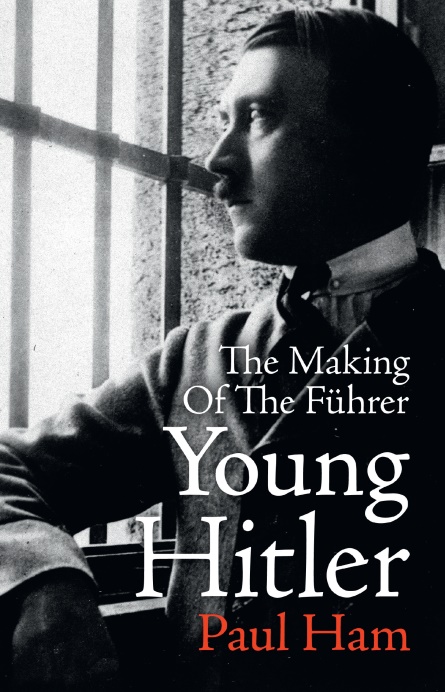When Adolf Hitler went to war in 1914, aged 25, he lived through what he would later call the “most stupendous experience of my life”. Twice decorated for bravery, the future dictator thrilled to battle, relished violence and was willing to give everything for his beloved Fatherland.

He heard of Germany’s defeat as he lay immobilised in a hospital bed, temporarily blinded from mustard gas. He opened his eyes on a terrible new world, of Germany’s loss and humiliation, the flight of the Kaiser, a Marxist uprising in Bavaria and the destruction of his beloved army.
Hitler would never accept Germany’s defeat or the terms of the peace settlement. Out of his fury arose an unquenchable thirst for revenge, against the ‘November criminals’ who had signed the armistice; against the socialists whom he blamed for stabbing the army in the back; and, most violently, against the Jews, on whom he would load the blame for all Germany’s woes and whom he considered a direct threat to the German master race of his imagination.
The seeds of that hatred lay in Hitler’s youthful experiences, growing up in Linz, Vienna and Munich, and as a young soldier in the Great War. What turned ‘a Viennese bum’, as Göring later damned him, into one of the most brutal dictators in human history? How had Hitler’s first war, the defining years of his life, affected his rise to power? In a broader sense, was Hitler a freak of history? Or rather an extreme example of a recurring ‘type’ of demagogue, who thrives in chaos, revolution and economic collapse?
Ham believes that other biographies have not given sufficient weight to the degree that the First World War shaped Hitler’s character. By peeling back the layers of Hitler’s childhood, war record and early political career, Ham examines the ordinary man beneath the myth and seeks to solve the riddle behind the enigma of the Nazi leader.
The striking features of Hitler’s experience of the First World War are that: he survived all 4½ years of it on the Western Front; he was a brave soldier and deserved his two Iron Crosses; he was exhilarated by the dangerous life of combat; he was disgusted by defeatism on the part of his comrades; he resented whingeing and poor morale on the home front; and he saw the heavy losses in the First Battle of Ypres as the malign doing of the German political and military establishment.
Naturally, all or much of this played into the man’s evolving personality. But certain central traits of the ‘mature’ Hitler do not seem to have had a Great War genesis or particular encouragement – his anti-Semitism, for example. At length, Ham refers to the anti-Semitic miasma in the air in Hitler’s youthful days in Vienna and Munich, but keeps commenting that Hitler was not irrevocably infected then. And it was not the war that did it either: Hitler’s Iron Cross First Class was recommended by his Jewish officer, and Hitler does not seem to have noticed or minded, much less felt disgusted or ashamed.
Ham’s earliest assessment of the child is as “sullen and resentful” and “by the age of 12 Hitler had grown into an emotionally indulged self-absorbed boy with a marked contempt for authority and the temper of a bully”. “Whence came this juvenile rage at the world? … The answer has eluded the powers of psychiatrists”, Ham humbly submits. And there is no trace of what might be called empathy for Hitler and his circumstances. Thus, despite the book’s avowed intention, there is no prising open the psyche of the as-yet-unformed young man.
If anything – and this seems the strong counter-current of Ham’s book – it was Hitler’s experiences in the aftermath of the war that seems to have most influenced the final Führer mould. Hitler bitterly embraced the myth of the stab in the back as an explanation for Germany’s defeat, and he threw himself into the business of fingering and nailing the assassin. In the end, this came down to being the entirely imaginary figure of Jewish Bolshevism.
The epilogue opens out into a critique on the present. Comparing and contrasting contemporary issues with the circumstances associated with Hitler’s rise detract from an otherwise well-presented historical work. Ham’s ‘solutions’ to prevent another Hitler are more suited to an editorial than this book. His motives in adding this sermonising commentary are unclear.
Ham is a former Sunday Times correspondent, with a Master’s degree in economic history from the London School of Economics. He now devotes most of his time to writing history and has authored six books.
The book includes several photographs, detailed notes, a selected bibliography and a comprehensive index. One appendix reproduces the German National Socialist ‘25 Point Programme’.
Young Hitler is a new direction for this acclaimed military historian. It is short and entertaining, but is far from an in-depth analysis of Hitler’s early life as the 20th century’s most well-recognised demagogue.
Contact Marcus Fielding about this article.






